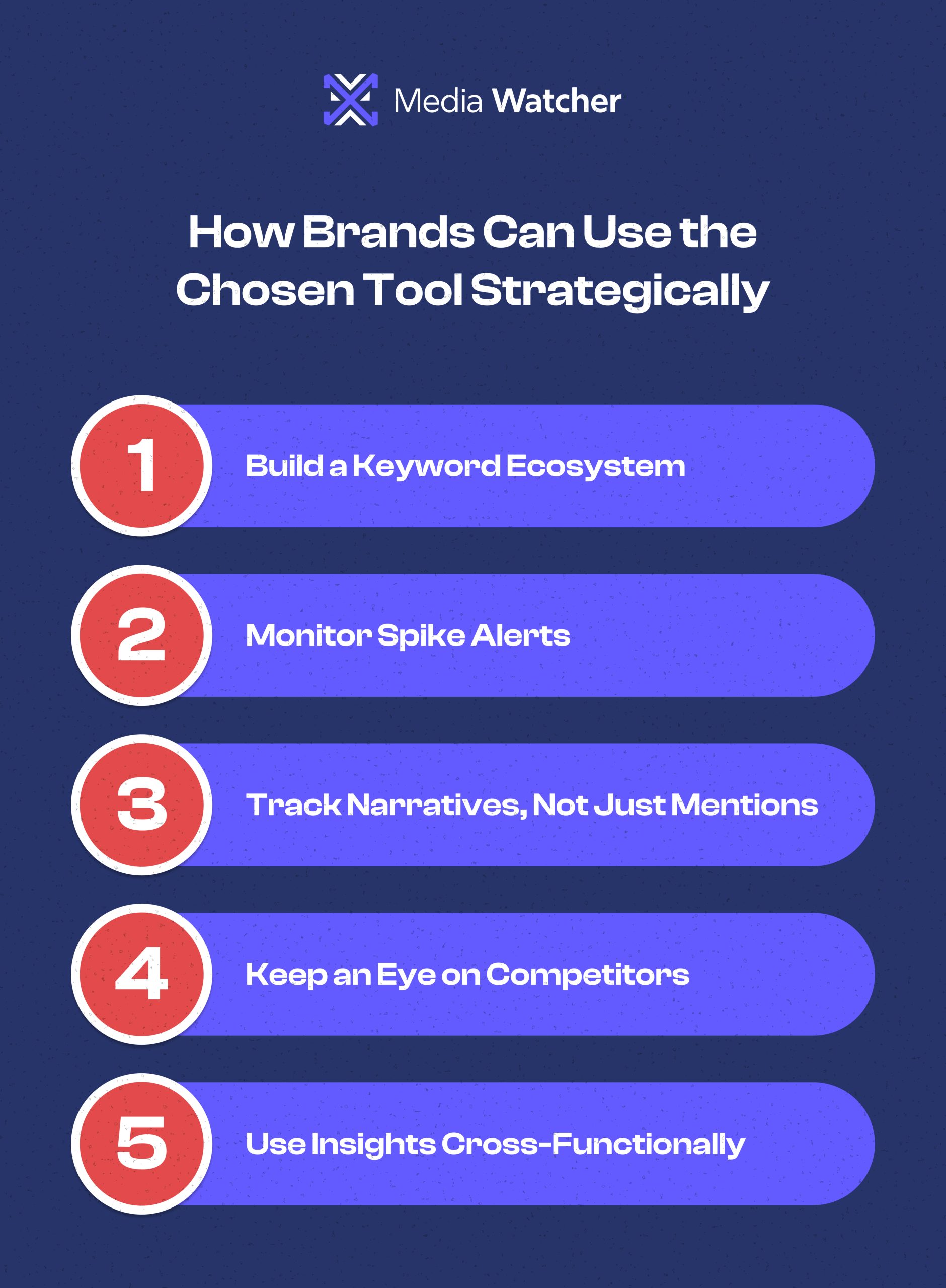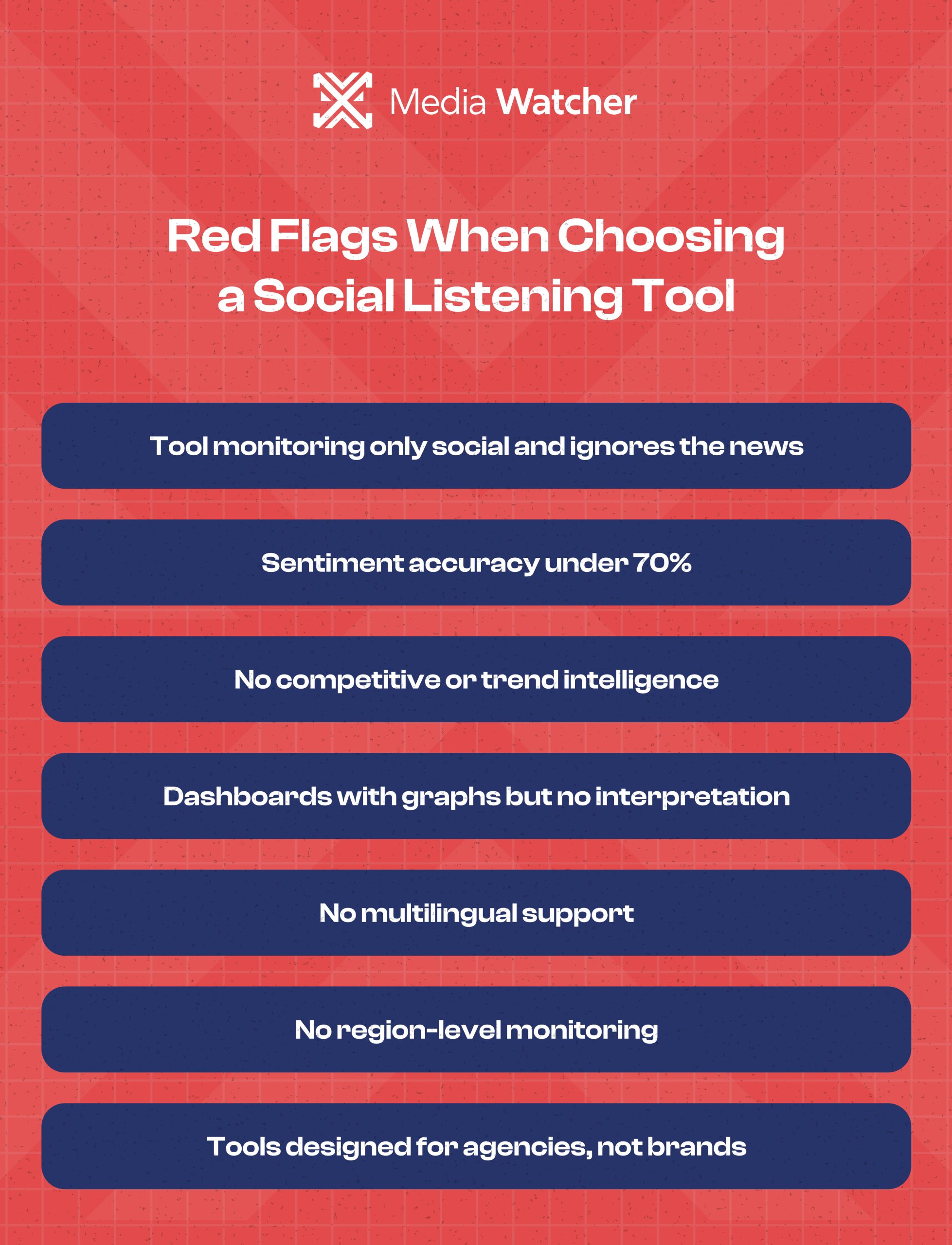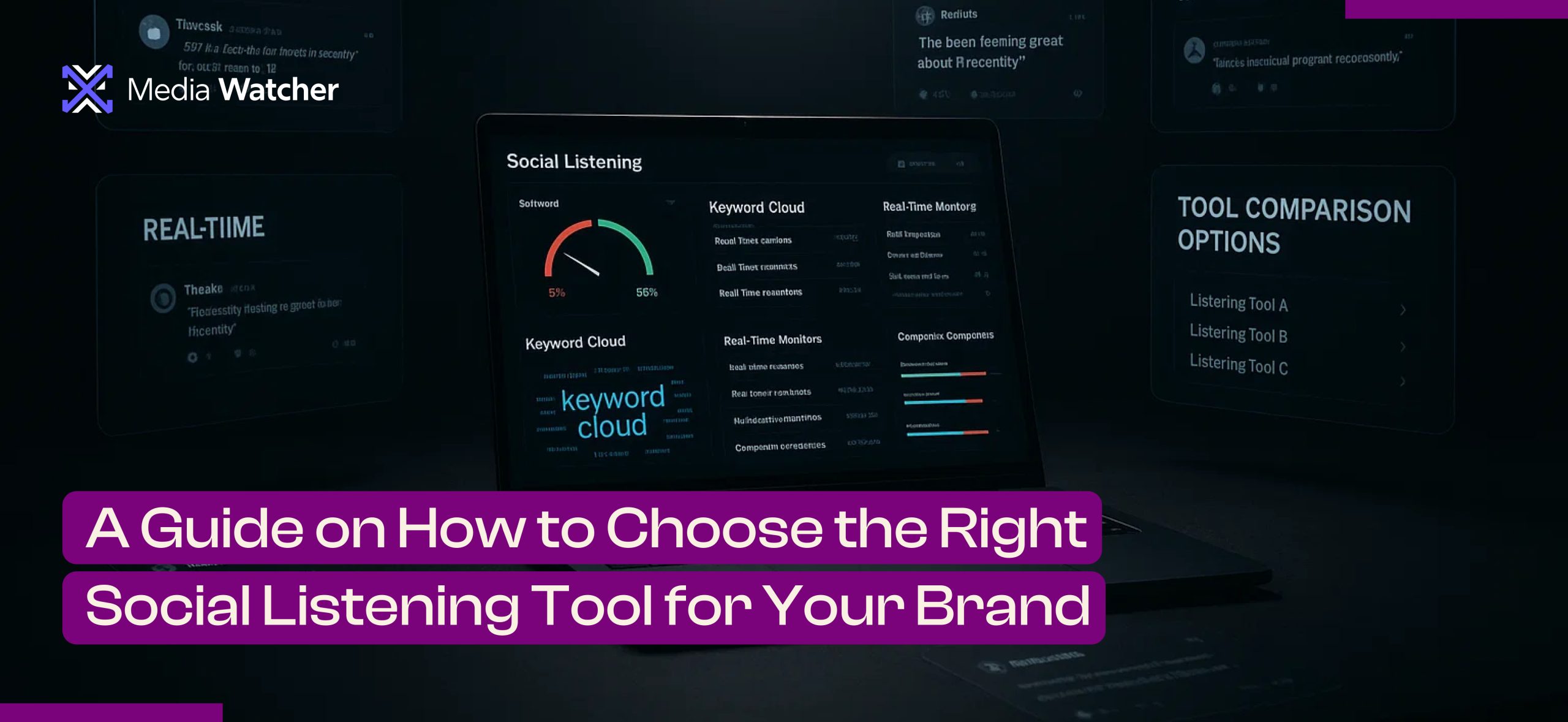Every brand hears its audience, but only the smart ones understand what they’re really saying. Somewhere between the memes, the passing remarks, the angry reviews, and the praise buried in comment sections, your brand’s reputation is being shaped.
This is not by campaigns or by press releases, but by online conversations you’re not in the room for. That’s why social listening isn’t a marketing add-on anymore, but a critical practice that drives insights across various business functions.
Moreover, it’s the operating system behind modern brand strategy, customer service, sales, and risk management.
And when a business is preparing for a rebrand or entering a new market, the difference between success and backlash often comes down to one simple question: Did they choose the right social listening tool, or the wrong one?
However, there are these challenges that come with choosing the right tool. Since the market is full of social listening platforms, social listening software, and hundreds of shiny dashboards claiming insight.
Not all of them can carry the weight of real brand decisions. So how do you choose the right one? Let’s make it easy and break it down in simple words.
At first, you need to know.
What Does Your Brand Actually Need?
Before exploring any social listening platforms or tools, brands need to define their purpose and end goal. You cannot choose a listening tool the way you choose a font; instead, you have to choose it like you’re choosing a strategic partner.
Ask yourself these questions.
- Is your goal to monitor brand reputation?
- Do you want deeper customer insights?
- Are you preparing for a rebrand and need to understand public sentiment first?
- Do you want to track competitors or rising threats?
- Is crisis detection a priority?
- Or do you need a tool that informs decisions across PR, product, and marketing teams?
It is essential for you to be clear about the end goal. Your internal clarity defines what features matter and what’s unnecessary noise. Startups and small businesses may only need a basic social monitoring tool.
However, at the enterprise level, navigating global markets, multiple languages, or rebranding efforts requires a full-scale B2C and B2B social listening software that is designed for high-volume, multi-region analysis.
What are the 7 Criteria Every Brand Should Evaluate Before Choosing a Social Listening Tool
Not all tools are developed the same way. Some of them are glorified keyword trackers, while some detect conversations but miss sentiment. Most of them give you dashboards but no interpretation. Others ignore news sources and the platforms that often spark the biggest brand narratives.
So, how will brands know which tool is best for them? Here’s what a brand must evaluate before investing in any social listening platform.
1. Depth of Coverage
If your social media listening tools track only Instagram, Facebook, and X, then you’re missing most of the conversation. An efficient tool covers channels and regions too, as real insights come from:
- News Outlets
- Online Magazines
- Tiktok
- Youtube
- Niche Industry Forums
- Blogs
- Product Review Sites
- Region-Specific Social Platforms
- Comments Under Comments
Therefore, a strong social listening solution captures conversations across regions, languages, and communities, and not just the ones brands find convenient.
This matters because what customers say publicly is only one part of sentiment. What they say anonymously or casually in comment sections is usually where the truth lies.
2. Real-Time Intelligence, Not Delayed Reporting
During a rebrand or any change that a company takes, every minute counts. For instance, imagine a spike in negative sentiment about your new logo appearing at 2 AM, and you don’t find out until 9 AM because your listening tool updates only once a day.
That’s seven hours of unaddressed narrative shaping delaying the reporting. A real social listening platform should give:
- Real-Time Alerts
- Sentiment Spikes
- Trending Keywords
- Narrative Shifts While They’re Still Forming
This is not a convenience anymore; instead, it’s a survival mechanism in order to survive in the competitive business market
3. Audience Sentiment Analysis
Online sentiment is messy. People use sarcasm, slang, emojis, and memes that flip meaning instantly. Weak social listening tools misread these signals, treating sarcasm as praise, jokes as criticism, and cultural comments as neutral. When sentiment is inaccurate, every brand decision built on it becomes unreliable.
4. Noise Reduction & Relevance
A brand doesn’t need 10,000 mentions; it just needs 500 relevant ones, and a strong social listening tool should filter repetitive spam, irrelevant keywords, or junk discussions. The main goal is to provide clear signals instead of overwhelming you with dashboards.
5. Actionable Dashboards (Not Data Dumps)
Many tools offer dashboards that do absolutely nothing for strategy. Therefore, you don’t need fluff, but a tool that helps in decision-making. An efficient social listening platform should provide:
- Trend Analysis
- Conversation Clustering
- Sentiment Heatmaps
- Narrative Breakdowns
In short, if your team needs a data analyst to interpret the dashboard, the tool has already failed.
6. Competitive Intelligence Built In
For a brand that considers rebranding, a new product launch, new collaborations, or strengthening brand position, they need a tool that shows:
- Competitor Sentiment
- Competitor Crises
- Competitor Rebranding Failures
- Opportunities They Missed
- Audience Segments: They’re Winning Or Losing
- Gaps in Perception You Can Claim
A social listening solution without competitive insight is incomplete.
7. Integration With Your Brand’s Actual Workflow
Your business team doesn’t need another disconnected tool, but an intelligence engine that plugs in everywhere. The right tool offers:
- API access
- CRM integration
- Automated report generation
- BI tool integration
- Custom trackers for campaigns and rebrands
The question is straightforward when choosing the right tool: Does it make your team’s work easier or harder? If it adds extra tasks instead of reducing them, you made the wrong choice.

How Can Social Listening Shape Rebranding Decisions – The Dunkin’s Case
Before we choose a tool, let’s look at a real example. When Dunkin’ removed “Donuts” from its name in 2018, it was more than just a branding change. It was a way to change how consumers see the brand.
The Insight Behind the Rebrand
For years, people were already calling the brand “Dunkin’ ” and across social platforms, the pattern was consistent:
- “Let’s grab Dunkin’.”
- “Dunkin’ coffee is better than…”
- “Dunkin’ drive-thru saved my morning.”
In many conversations, one clear trend emerged that having Dunkin’s in the morning was the main focus, not the donut.
Thus, a strong social listening tool could reveal exactly what the organic language customers used to describe the brand. This insight made the rebrand feel natural instead of forced.
What Social Listening Could Have Revealed During the Rebrand
Imagine analyzing real-time conversations during the rollout:
- Did people think the brand was abandoning donuts?
- Did coffee-related mentions spike?
- Did sentiment lean curious, confused, or supportive?
- Which regions resisted the change?
- Which age groups embraced it fastest?
Every one of these questions is the kind of thing a brand can answer instantly with a good social listening platform.
Dunkin’s rebrand succeeded because the cultural narrative already supported it.
Therefore, with a tool that understands those narratives, it could catch it early and prevent a disaster when the sentiment isn’t aligned.

How Media Watcher is the Tool Built for Modern Brands
Here’s the quiet truth that we need to know. Most social listening tools aren’t built for the speed of today’s media landscape. They track mentions but miss narratives. They monitor platforms but miss shifts in sentiment. They show data but hide meaning.
Media Watcher is the go-to solution that solves the problem and gives you:
- Real-Time Media Intelligence
- Global Coverage Across 100k Sources
- Multilingual Detection Across 80+ Languages
- Competitive Landscape Mapping
- Risk Alerts
- Sentiment Accuracy Powered By Advanced AI
- Dashboards That Actually Make Sense
- Api And Crm Integrations
Thus, it’s not just a social listening tool, but a brand radar that is built for teams that need to know what’s happening before it becomes public knowledge.
Suppose your brand is preparing a rebrand, monitoring reputation, or simply trying to stay ahead of cultural shifts. In that case, Media Watcher gives you the clearest view of your narrative and everyone else’s. Visit our website and book a demo!



